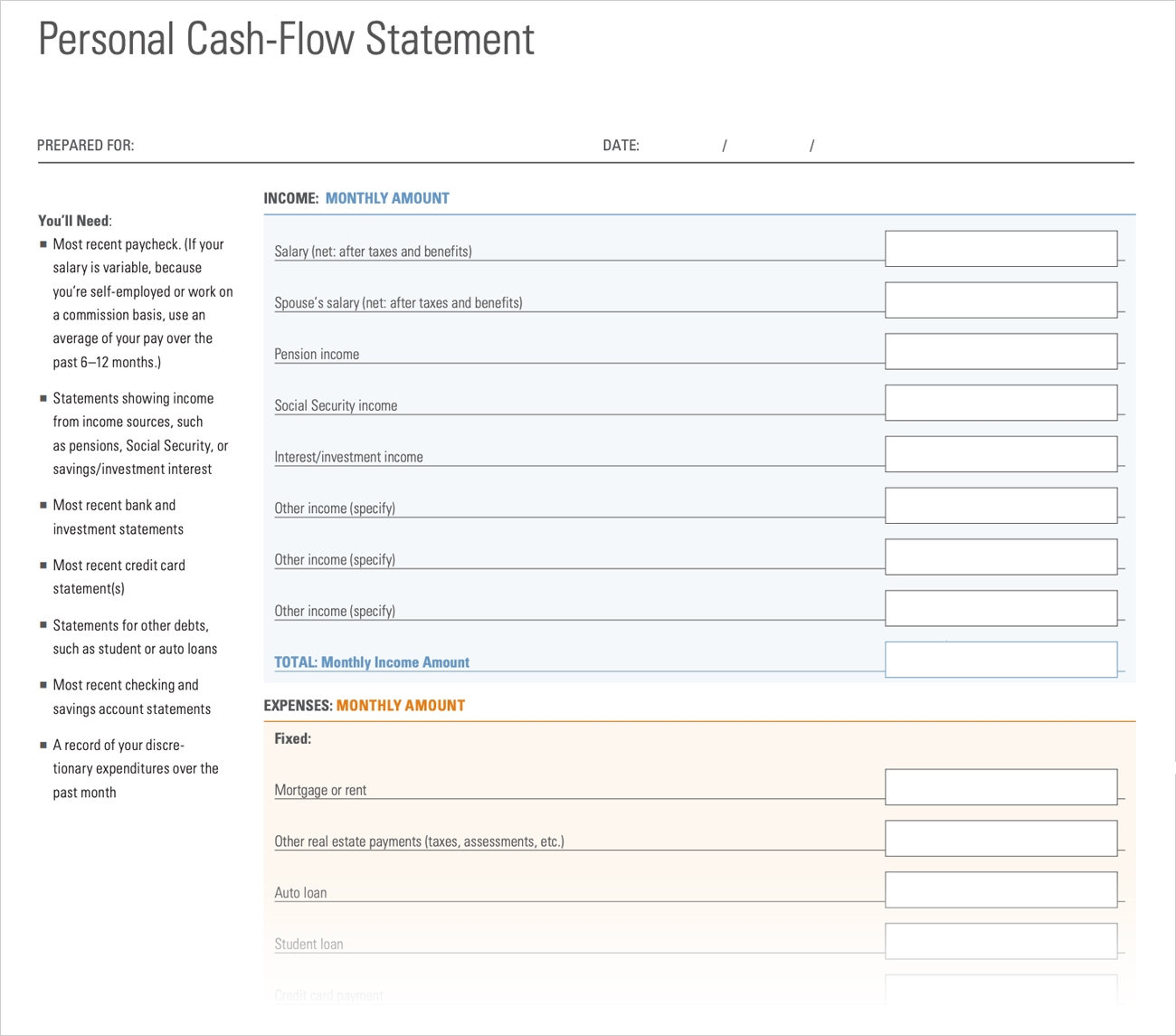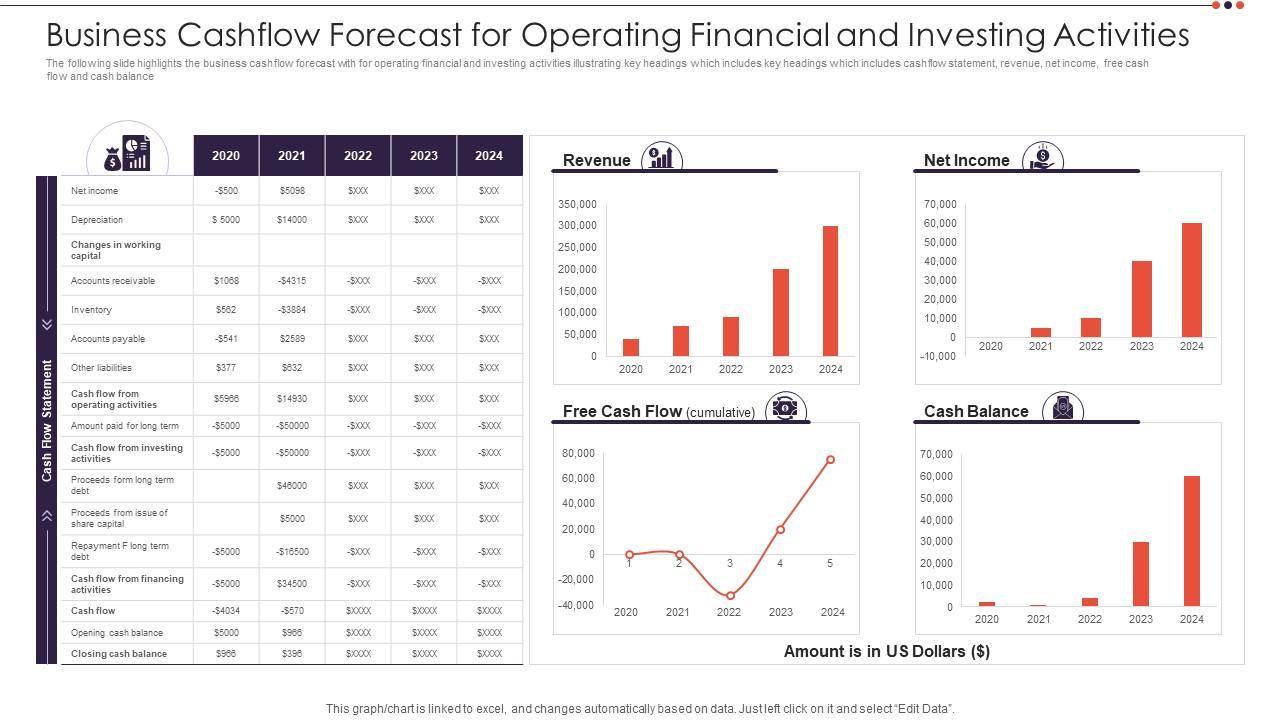

Finance
What Is Cash Flow Insurance
Published: December 21, 2023
Learn how cash flow insurance can protect your finances. Understand the importance of managing your money and securing your financial future with this comprehensive coverage.
(Many of the links in this article redirect to a specific reviewed product. Your purchase of these products through affiliate links helps to generate commission for LiveWell, at no extra cost. Learn more)
Table of Contents
- Introduction
- Understanding Cash Flow Insurance
- Benefits of Cash Flow Insurance
- Types of Cash Flow Insurance
- How Cash Flow Insurance Works
- Coverage and Policy Options
- Factors to Consider when Choosing Cash Flow Insurance
- Claims Process for Cash Flow Insurance
- Limitations and Exclusions of Cash Flow Insurance
- Conclusion
Introduction
Managing finances is a crucial aspect of any business. One key element that plays a vital role in the financial stability of an organization is cash flow. Cash flow refers to the movement of money in and out of a business, including the inflow of revenues and the outflow of expenses.
However, unexpected events such as economic downturns, natural disasters, or even the sudden loss of a major client can disrupt a business’s cash flow. Without a steady cash flow, businesses can struggle to meet their financial obligations, leading to financial instability and potential bankruptcy.
To mitigate the risks associated with unpredictable cash flow, businesses have turned to a valuable tool known as cash flow insurance. Cash flow insurance, also known as business interruption insurance, is designed to protect businesses from financial losses due to interruptions in their cash flow.
This comprehensive insurance coverage provides financial support to businesses during times when their revenue stream is significantly affected, helping them maintain their financial stability and continue operations.
In this article, we will delve into the details of cash flow insurance, exploring its benefits, types, coverage options, and how it works. We will also discuss the factors to consider when choosing cash flow insurance, the claims process, and the limitations and exclusions associated with this type of insurance.
Whether you are a small business owner, an entrepreneur, or an executive in a large corporation, understanding cash flow insurance is essential to protect your organization’s financial well-being.
So, let’s dive in and uncover the importance of cash flow insurance and how it can safeguard your business in times of financial uncertainty.
Understanding Cash Flow Insurance
Cash flow insurance, also known as business interruption insurance, is a type of insurance coverage that protects businesses from financial losses caused by interruptions in their normal cash flow. It is designed to provide businesses with financial support during a period when their revenue stream is significantly impacted due to unforeseen events.
While traditional insurance policies primarily focus on physical damages to property or assets, cash flow insurance covers the financial losses incurred by a business due to a disruption in its operations. It helps businesses overcome obstacles such as reduced sales, increased expenses, or a complete halt in operations due to events like natural disasters, accidents, pandemics, or government-mandated closures.
When a business is unable to generate its usual income, cash flow insurance kicks in to provide a crucial lifeline. It can cover expenses such as salaries and wages, rent or mortgage payments, loan payments, utilities, and any other ongoing business costs that would normally be covered by the regular cash flow.
It’s important to note that cash flow insurance is not a standalone policy. It is commonly added as an endorsement or rider to a property insurance policy or included within a comprehensive business insurance package. This ensures that businesses are protected not only from physical damages but also from the financial repercussions of a disruption in their cash flow.
One key aspect to understand about cash flow insurance is that it typically has a waiting period and a specified coverage period. The waiting period refers to the initial period after the interruption when the coverage does not kick in. The coverage period is the duration for which the insurance policy will provide financial support, usually up to a predetermined limit.
Businesses must carefully evaluate their cash flow needs and the potential risks they face before determining the appropriate amount of coverage and the length of the waiting period. This allows them to tailor the policy to align with their specific business requirements and risk tolerance.
Overall, cash flow insurance serves as a valuable safety net for businesses, protecting them from financial losses that can occur due to unexpected events. It gives business owners peace of mind knowing that even during challenging times, their financial stability can be safeguarded, enabling them to bounce back and resume operations smoothly.
Benefits of Cash Flow Insurance
Cash flow insurance offers numerous benefits to businesses, providing them with a layer of financial protection during times of cash flow disruption. Let’s explore some of the key advantages:
- Financial Stability: Cash flow insurance helps businesses maintain their financial stability even when faced with unforeseen events. It ensures a steady stream of income during periods of interruption, allowing businesses to cover necessary expenses and avoid financial strain.
- Business Continuity: With cash flow insurance in place, businesses can continue their operations despite a cash flow disruption. Whether it’s covering ongoing expenses or providing funds to relocate to a temporary location, the insurance ensures that operations can resume promptly, minimizing downtime and potential customer loss.
- Employee Retention: During times of financial uncertainty, businesses may struggle to meet payroll obligations, which can lead to the loss of valuable employees. Cash flow insurance helps mitigate this risk by providing the necessary funds to cover employee salaries and wages, ensuring businesses can retain their workforce.
- Loan Repayment: Businesses that have outstanding loans or debts may find it challenging to meet their payment obligations during a cash flow disruption. Cash flow insurance can provide the necessary funds to cover loan repayments, preventing defaults and maintaining a positive relationship with lenders.
- Resilience and Recovery: When unexpected events occur, businesses often incur additional costs to recover and resume operations. Cash flow insurance can assist in covering these costs, including repairs, temporary relocation expenses, or advertising campaigns to regain customer confidence.
- Peace of Mind: Perhaps one of the most significant benefits of cash flow insurance is the peace of mind it brings to business owners. Knowing that their business is protected from financial losses due to cash flow disruptions allows owners to focus on day-to-day operations and long-term growth without constantly worrying about unforeseen events.
It’s important for businesses to assess their specific needs and risks when considering cash flow insurance. By understanding the potential benefits it offers, businesses can make informed decisions to protect their financial well-being and ensure continuity in the face of adversity.
Types of Cash Flow Insurance
Cash flow insurance comes in various forms, allowing businesses to tailor their coverage based on their specific needs and industry requirements. Let’s explore some of the common types of cash flow insurance:
- Business Interruption Insurance: This is the most common type of cash flow insurance. It provides coverage for loss of income and extra expenses when a business is unable to operate due to covered events such as fire, natural disasters, or other unforeseen circumstances. Business interruption insurance typically covers ongoing expenses, such as rent, utilities, and payroll, and may also include coverage for temporary relocation costs.
- Contingent Business Interruption Insurance: This type of insurance covers interruption in a business’s cash flow caused by disruptions in the operations of key suppliers, customers, or partners. For example, if a supplier experiences a fire that prevents them from delivering goods or services, resulting in a loss of revenue for the insured business, contingent business interruption insurance can provide coverage.
- Dependent Property Insurance: Dependent property insurance is closely related to contingent business interruption insurance. It covers loss of income resulting from damage to properties that are not owned by the insured business but are essential for its operations. For example, if a business relies on a specific warehouse or distribution center that is damaged, dependent property insurance can provide coverage for the resulting loss of income.
- Extra Expense Insurance: Extra expense insurance covers the additional costs incurred by a business to continue its operations during a disruption. This can include expenses related to finding temporary facilities, renting equipment, implementing alternative production methods, or other necessary expenditures to prevent a complete halt in business activities.
- Contingent Extra Expense Insurance: Similar to contingent business interruption insurance, contingent extra expense insurance covers the additional costs incurred by a business when a key supplier or partner experiences a disruption that impacts the insured business’s operations. It helps cover the expenses required to find alternative suppliers or implement contingency plans to maintain business continuity.
- Trade Credit Insurance: Trade credit insurance protects businesses from losses due to customer non-payment or insolvency. It ensures that the insured business receives payment for goods or services provided, safeguarding their cash flow and mitigating the risk of financial loss.
It’s important for businesses to assess their specific risks and consult with an insurance professional to determine the most suitable type of cash flow insurance for their needs. Each type of coverage offers unique benefits and addresses different aspects of cash flow disruptions, ensuring that businesses have the necessary financial support to navigate challenging times and maintain their operations.
How Cash Flow Insurance Works
Cash flow insurance functions by providing financial support to businesses during periods of cash flow disruption. Understanding how it works is essential for businesses seeking to protect their financial stability. Here’s a breakdown of the key aspects of how cash flow insurance operates:
1. Policy Purchase: Businesses typically purchase cash flow insurance as an add-on to their existing property or comprehensive business insurance policy. They work with insurance providers to determine the appropriate coverage amount, waiting period, and policy duration based on their specific needs and risk tolerance.
2. Cash Flow Disruption: When an unexpected event occurs that interrupts a business’s normal cash flow, the insured business must meet the criteria specified in the policy for coverage to be activated. Common triggers for coverage include property damage from natural disasters, fires, or other covered events, as well as closures mandated by government authorities or significant disruptions in the operations of key suppliers or customers.
3. Waiting Period: Cash flow insurance policies typically have a waiting period, also known as the deductible or waiting period, before coverage begins. This waiting period is the initial period after the cash flow disruption during which the insured business must endure the financial impact on its own. The waiting period can range from a few days to weeks or even months, depending on the policy terms.
4. Coverage Period: Once the waiting period is completed, the cash flow insurance policy enters the coverage period. During this period, the insurer will provide financial support to the insured business to cover ongoing expenses, such as payroll, rent, utilities, loan repayments, and other necessary costs that would be covered by the normal cash flow.
5. Claims Process: When a cash flow disruption occurs and the waiting period ends, the insured business can file a claim with their insurance provider. The claims process involves submitting documentation and evidence of the cash flow disruption, including financial statements, proof of expenses, and any other relevant documentation. The insurer will assess the claim and, upon approval, provide the agreed-upon coverage amount to the insured business.
6. Limitations and Exclusions: It’s important for businesses to understand the limitations and exclusions of their cash flow insurance policy. These can vary depending on the specific policy and insurance provider. Common exclusions may include certain types of events or damages, fines or penalties, acts of war, or intentional acts by the insured.
7. Policy Renewal and Review: Cash flow insurance policies typically have a specified duration, after which they need to be renewed. It’s important for businesses to regularly review and reassess their coverage needs, considering any changes in their operations, risks, or industry landscape, and ensuring that their insurance policy remains aligned with their current needs.
Cash flow insurance provides businesses with a safety net during times of financial uncertainty. By understanding how this insurance works, businesses can effectively mitigate the risks associated with cash flow disruptions and ensure the continuity of their operations.
Coverage and Policy Options
Cash flow insurance offers businesses a range of coverage options to protect their financial stability during periods of cash flow disruption. Understanding the various coverage and policy options is crucial for businesses seeking to tailor their insurance to their specific needs. Here are some common coverage elements and policy options to consider:
1. Loss of Income: This coverage provides reimbursement for the loss of income that a business experiences due to a cash flow disruption. It typically covers the net income that would have been earned during the coverage period, taking into account any ongoing expenses that would have been covered by the normal cash flow.
2. Extra Expenses: Extra expense coverage reimburses the additional costs that a business incurs to minimize the interruption and resume operations during a cash flow disruption. It covers expenses such as temporary relocation costs, renting equipment, implementing alternative production methods, or any other necessary expenditures to prevent a complete halt in business activities.
3. Extended Coverage: Some policies offer extended coverage options that provide protection beyond the initial coverage period. This can be particularly useful in situations where the recovery period extends beyond the estimated timeline. Extended coverage ensures that the insured business continues to receive financial support until normal cash flow is restored.
4. Civil Authority Coverage: Civil authority coverage provides compensation for losses incurred when government authorities prohibit access to a business’s premises due to events like natural disasters or emergencies. This coverage ensures that the business receives financial support to cover ongoing expenses during the period of restricted access.
5. Maximum Indemnity Period: The maximum indemnity period is the duration for which the insurance policy will provide coverage. It is essential for businesses to carefully assess their potential recovery timeline when selecting the maximum indemnity period to ensure they have sufficient coverage until normal cash flow resumes.
6. Sub-Limits: Some cash flow insurance policies may have sub-limits, which are specific coverage limits for certain types of losses or expenses. These sub-limits can affect the overall coverage amount available to the insured business. It is crucial for businesses to understand the sub-limits within their policy and evaluate whether they align with their needs and potential risks.
7. Deductible or Waiting Period: Cash flow insurance policies typically have a waiting period or deductible, which is the initial period after the cash flow disruption during which the insured business must bear the financial impact on its own. It is important for businesses to determine the appropriate waiting period based on their ability to self-fund expenses during this time.
When choosing coverage and policy options, businesses should carefully assess their specific risks, financial needs, and recovery potential. Consulting with an insurance professional can provide valuable guidance in determining the most suitable coverage and policy options for their unique circumstances.
Factors to Consider when Choosing Cash Flow Insurance
Choosing the right cash flow insurance policy is crucial for businesses looking to protect their financial stability during times of cash flow disruption. To ensure that the selected policy meets their needs, businesses should consider several key factors. Here are some important considerations:
Risk Assessment: Conduct a comprehensive risk assessment of the business to understand the potential risks and vulnerabilities that could lead to cash flow disruption. Consider factors such as location, industry, supplier dependencies, customer base, and external events that could impact operations.
Coverage Needs: Evaluate the specific coverage needs of the business in the event of a cash flow disruption. Assess the ongoing expenses that need to be covered, including salaries, rent or mortgage payments, utilities, loan repayments, and any other essential costs. Determine the necessary coverage amounts for each category.
Policy Limits: Examine the policy limits offered by different insurance providers. Ensure that the selected policy provides sufficient coverage to meet the business’s financial needs during a cash flow disruption. Consider factors such as maximum indemnity period, sub-limits, and overall coverage limits.
Deductible and Waiting Period: Evaluate the deductible or waiting period associated with the policy. Consider the business’s financial capabilities to sustain itself during the waiting period before the insurance coverage kicks in. Balance the waiting period length with the associated premium costs.
Insurance Provider: Research and assess the reputation, financial stability, and claims handling process of potential insurance providers. Look for providers with a strong track record of supporting businesses during cash flow disruptions and providing timely and fair claim settlements.
Premium Costs: Compare premium costs from different insurance providers. Assess the affordability of the premiums relative to the coverage offered. Consider any discounts or incentives offered by insurance companies for implementing risk management measures or bundling insurance policies.
Policy Exclusions: Review the policy exclusions and limitations to fully understand what is not covered by the insurance policy. Be aware of any specific events or circumstances that could lead to the denial of a claim. Consider these exclusions when assessing the overall suitability of the policy for the business’s specific risks.
Claims Process: Understand the claims process and requirements outlined by the insurance provider. Assess the ease of filing a claim and the necessary documentation. Consider the reputation of the insurance company for handling claims efficiently and promptly.
Professional Advice: Seek guidance from an insurance professional or broker who specializes in cash flow insurance. They can provide valuable insights, help assess the business’s unique risks, and assist in selecting the most appropriate policy to meet specific needs.
By carefully considering these factors, businesses can make informed decisions when choosing a cash flow insurance policy. This ensures that their financial stability is protected during times of cash flow disruption, allowing them to weather unexpected events and maintain their operations with confidence.
Claims Process for Cash Flow Insurance
When a business experiences a cash flow disruption covered by their cash flow insurance policy, filing a claim is a crucial step to receive the financial support needed to overcome the interruption. Understanding the claims process is essential to ensure a smooth and efficient resolution. Here are the key steps involved in the claims process for cash flow insurance:
1. Notification: As soon as the insured business becomes aware of the cash flow disruption, it is important to notify the insurance provider promptly. Refer to the policy documents for specific instructions on how and when to report the claim. Most insurance companies have a designated claims department or representative to handle these matters.
2. Documentation: Gather all relevant documentation and evidence to support the claim. This may include financial statements, profit and loss statements, invoices, and any other documentation that verifies the impact of the cash flow disruption on the business’s income and expenses. Ensure that all documentation is complete, accurate, and organized to facilitate the claims process.
3. Claims Submission: Prepare and submit the claim to the insurance provider according to their specified procedures. This typically involves completing a claim form and attaching the supporting documentation. Be sure to adhere to any deadlines or timelines indicated in the policy to avoid any potential claim denial due to late submission.
4. Claim Assessment: Once the insurance provider receives the claim, they will review and assess the information submitted. This may involve conducting an investigation, verifying the authenticity of the submitted documents, and evaluating the coverage and policy terms to determine the extent of the loss and the applicable coverage threshold.
5. Claim Adjuster: In some cases, the insurance provider may assign a claim adjuster to assess the claim and conduct a thorough investigation. The adjuster will work closely with the insured business to gather additional information, evaluate the financial impact of the cash flow disruption, and determine the amount of coverage eligible under the policy.
6. Claim Approval: Once the claim assessment is complete and the insurance provider is satisfied with the documentation and evidence provided, they will approve the claim. The insured business will then receive confirmation of the approved claim and an indication of the amount of financial support they will receive to mitigate the cash flow disruption.
7. Claim Payment: Upon claim approval, the insurance provider will initiate the payment process. Depending on the policy terms and agreed-upon procedures, the insured business may receive a lump-sum payment or periodic installments to help cover the income loss and additional expenses incurred during the cash flow disruption.
8. Documentation Retention: It is important for businesses to retain a copy of all claim-related documents for future reference or any potential audit. This includes copies of the claim form, supporting documents, correspondence with the insurance provider, and any other relevant communication.
Throughout the claims process, effective communication with the insurance provider is crucial. It is advisable to maintain open lines of communication, promptly respond to any inquiries or requests for additional information, and seek clarification if any aspect of the process is unclear.
By understanding the claims process for cash flow insurance and following these steps, businesses can navigate the process with confidence, ensuring a fair and timely resolution to their claim and receiving the financial support needed to recover from the cash flow disruption.
Limitations and Exclusions of Cash Flow Insurance
While cash flow insurance provides valuable protection for businesses during times of cash flow disruptions, it is important to be aware of the limitations and exclusions of this type of insurance. These limitations and exclusions can have a significant impact on the coverage provided under the policy. Here are some common limitations and exclusions to consider:
1. Waiting Period: Cash flow insurance policies typically have a waiting period before the coverage becomes effective. During this waiting period, the insured business is responsible for bearing the financial impact of the cash flow disruption. The length of the waiting period can vary depending on the policy and should be carefully considered when selecting coverage.
2. Pre-Existing Conditions: Cash flow insurance typically does not cover loss of income resulting from pre-existing conditions. If a cash flow disruption is related to a pre-existing condition that was known or should have been known before the policy was issued, the insurance provider may deny the claim. It is important to disclose all relevant information about the business’s financial health and potential risks when applying for coverage.
3. Policy Limits: Cash flow insurance policies have specified limits on the coverage amount. These limits can impact the total amount that will be reimbursed for loss of income and additional expenses. It is essential for businesses to understand the policy limits and ensure they are sufficient to meet their financial needs in the event of a cash flow disruption.
4. Excluded Events: Cash flow insurance policies may exclude coverage for certain events or circumstances. Common exclusions include acts of war, terrorism, nuclear incidents, and deliberate acts by the insured. It is important to review the policy language carefully to understand the specific events or circumstances that are excluded from coverage.
5. Gross Profit Calculation: Cash flow insurance policies typically calculate loss of income based on the business’s gross profit. However, the policy may specify certain adjustments or exclusions in the calculation, such as non-insurable expenses, increased cost of working, or costs that would have been incurred regardless of the cash flow disruption. These factors can impact the final amount of the reimbursed loss.
6. Waiting Period Reset: In some cases, if the insured business experiences a partial interruption followed by a full cash flow disruption within a specific timeframe, the waiting period may reset, requiring the business to endure a new waiting period before coverage becomes effective. This provision is important to be aware of, as it can impact the timing and extent of the coverage provided.
7. Sub-Limits for Specific Expenses: Some policies may have sub-limits on specific types of expenses, such as temporary relocation costs or extra expenses. These sub-limits can restrict the maximum amount that will be reimbursed for these specific expenses, even if the overall policy limit has not been reached.
It is crucial for businesses to carefully review their cash flow insurance policy and understand the limitations and exclusions. Consulting with an insurance professional can also provide clarity on these aspects and help businesses determine the most suitable coverage that aligns with their specific needs and potential risks.
By being aware of the limitations and exclusions, businesses can make informed decisions about their coverage and take proactive steps to address any gaps in protection, ensuring that cash flow insurance provides the necessary financial support during times of cash flow disruption.
Conclusion
Cash flow insurance is a vital tool for businesses to protect their financial stability during times of cash flow disruption. It provides crucial support by covering loss of income, extra expenses, and other financial obligations that arise due to unforeseen events. By understanding the nuances of cash flow insurance and considering various factors such as coverage needs, policy options, and limitations, businesses can make informed decisions to mitigate the risks associated with cash flow disruptions.
The benefits of cash flow insurance are numerous. It ensures financial stability, enables business continuity, retains valuable employees, facilitates loan repayments, supports resilience and recovery efforts, and ultimately fosters peace of mind for business owners. Through the careful assessment of risks, selection of coverage options, and understanding of policy terms, businesses can tailor their cash flow insurance to their specific needs and industry requirements.
However, it is crucial to recognize the limitations and exclusions of cash flow insurance. Waiting periods, pre-existing condition exclusions, policy limits, and specific exclusions for events or circumstances can impact the coverage provided. Taking the time to thoroughly review policy documents and seek guidance from insurance professionals will help businesses fully understand the scope of their coverage and identify any potential gaps.
In conclusion, cash flow insurance plays a crucial role in safeguarding businesses from the financial consequences of cash flow disruptions. By assessing risks, determining coverage needs, selecting the appropriate policy options, and understanding the claims process, businesses can protect their financial well-being and ensure continuity even in the face of unexpected events. With the right cash flow insurance in place, businesses can navigate challenging times with confidence, knowing that their financial stability is protected.














